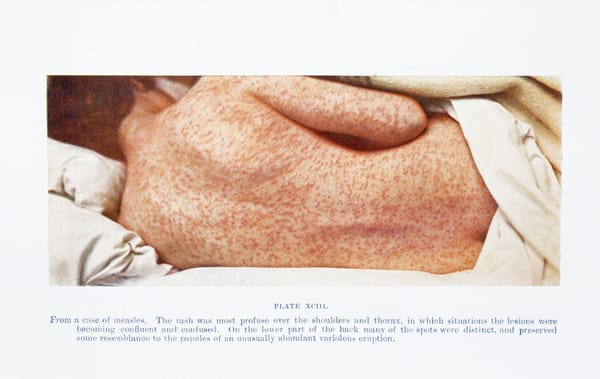From the Lab to your Plate – the Science Behind Five Intriguing Foods
Missed your weekly dose of food? Ex-Food Editor (and your newest Science Editor) Julia is back and easing into her new role with a fusion of the two for a light read…

Most foods are simple - some ingredients grow on trees, bushes or in fields, others are taken from animals, and depending on their nutritional value, undergo some level of processing. But with the modern era comes change, and as science is increasingly being installed in the kitchen (food science is even a discipline in its own right – petition for Imperial to introduce it as a degree? Stay tuned), we’ve chosen to unravel the science behind 5 interesting examples below.
Astronaut/space food
Granted, this may not be the most commonly consumed product on the list, but perhaps you’ve wondered about it nevertheless. Food taken into space must fit multiple criteria: be compact, have a light mass and of course a high nutritional benefit, all while being preservable for a long time period and consumable in a weightless environment.Freeze-drying, or lyophilisation, solves most of these problems, and even causes less damage than other dehydration methods that use higher temperatures. The product may be pre-treated by revising the formula or concentrating the product in preparation for freezing. Next comes the freezing stage, during which the material is cooled below its triple point (the lowest point at which the solid, liquid, and gas phases can coexist) in a rapid manner to avoid the formation of large ice crystals, which can result in poor texture and loss of nutritional value. Finally, drying occurs in 2 phases: the primary phase, which involves lowering the pressure to a few millibars using a partial vacuum and supplying heat to cause sublimation of the ice, and the secondary phase, which aims to remove unfrozen water molecules by using higher temperatures than the previous step. This results in a light, crumbly food that can easily be restored by rehydration with water, filling the microscopic pores caused by the procedure.
Nitrogen ice cream
Not only used for making ice cream, but certainly the most delicious way to enjoy nitrogen (welcome to 2019, where we apparently enjoy consuming the elements of Group 15), so what’s the secret? Simple: a standard ice cream mix is made, and then liquid N2 is poured in. The temperature of liquid nitrogen is -196 degrees Celsius, so the ice cream is frozen extremely rapidly and no ice crystals are formed - resulting in a highly creamy texture (and definitely a much cooler ice cream to brag about). However, if not fully evaporated, liquid nitrogen can create solid, brittle, glass-like shards, so be wary of any sketchy-looking offers for this treat.
Popping boba
Finally, something you’re likely to have tried in your lifetime. No idea what I’m talking about? Two words: bubble tea (although popping boba have also been used as frozen yoghurt or ice cream toppings, so hey, boba lovers rejoice). If you’ve ever ventured beyond the classic milk bubble tea with tapioca pearls, you might have even had bubble tea with popping boba. Flavoured, usually fruit juice-resembling liquids are thoroughly mixed with powdered sodium alginate, and then, drop by drop, dripped into a bowl filled with cold calcium chloride, creating small spheres which we know as boba. The magic lies in the calcium solution which forms the thin, flexible skin of the boba, and results in that delightful juicy POP.
Edible foam
We’ve gone through the not relatable, uncommon and basic, so now it’s time for a little more class with this Michelin-level molecular gastronomy. To understand the creation of culinary foam, let’s take a look at its composition: 2 phases (aqueous and gaseous), with a thin film at their interface in which large amounts of gas bubbles are essentially trapped - in this way similar to an emulsion of fat and liquid. To generate this, natural flavours, such as fruit juices, stock, or herbal infusions, are mixed with a stabilising surfactant, such as lecithin or monoglycerides, in order to reduce the interfacial tension between the aqueous and gaseous phases of the components and facilitate molecule adherence. Without this, the forces of liquid and air within the bubbles would counteract, rupturing the bubbles and causing the foam to disintegrate. A mechanical force, usually whipping, is then applied in order to introduce air into the mixture and create the aforementioned bubbles. A network of interconnected films between bubbles, known as lamellae (no, not lamellipods biologists… but close enough I guess?), is what gives culinary foam its relative stability.
Candyfloss
If you’ve never had candyfloss/cotton candy/barbe à papa/fairy floss/ insert term for that fluffy pink sugary goodness here, have you even had a childhood? Anyway… let’s keep this one short and sweet. First, specially flavoured solid sugar is placed into a small bowl, melted using a heating element, and then squeezed out through tiny holes into a larger vessel by centrifugal force (yes, centrifuges are not only for RNA extraction). The miniscule holes result in extremely thin threads of sugar, while the instantaneous increase in surface area and exposure to cooler air means that when they emerge on the other side, they are already solidified. All that’s left now is for the machine operator to gather the sugary strands into portions, and your horribly-sticky -yet-delightful-sugar-coma-childhood-memory-concoction is ready to consume.
If anyone ever told you that science isn’t cool, let them live without. More boba for us.








